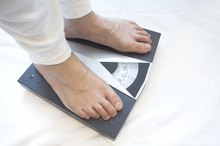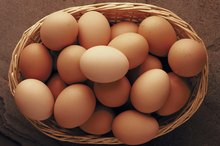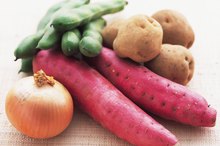Meat & Veggies Diet
A meat and vegetables diet may be simpler to follow than other diet programs because you only eat a few kinds of food while avoiding other foods. This kind of diet may help you lose weight or reduce your carbohydrate intake. A diet with only meat and vegetables is not nutritionally adequate, and a nutritionist can help you develop a more balanced diet for controlling your weight and staying healthy.
What It Includes
This diet includes all kinds of meats, such as beef, pork, chicken, turkey and seafood, and vegetables, including leafy greens, beans, starchy vegetables and other kinds of vegetables. Nutrient-dense foods which are not allowed include fruits, oils, nuts, whole grain products, including bread, cereals, pasta and brown rice, seeds and dairy products. The diet also excludes refined starches, added sugars, such as in sweets and sugar-sweetened beverages, and added solid fats, such as hydrogenated oils and butter. These are sources of empty calories.
- This diet includes all kinds of meats, such as beef, pork, chicken, turkey and seafood, and vegetables, including leafy greens, beans, starchy vegetables and other kinds of vegetables.
- Nutrient-dense foods which are not allowed include fruits, oils, nuts, whole grain products, including bread, cereals, pasta and brown rice, seeds and dairy products.
Weight Control
Ovo-Vegetarian Meal Plan
Learn More
A diet with only meat and vegetables may help you lose weight because you are eliminating many common, high-calorie foods. The typical American diet contains hundreds of calories per day from grain-based desserts, such as cakes, cookies and pastries, ice cream, cheese, caloric beverages, such as alcoholic drinks, sugar-sweetened soft drinks, fruit drinks and energy drinks, milk, yeast breads, and mixed foods, such as pizza or burritos, according to the 2010 Dietary Guidelines from the U.S. Department of Health and Human Services. However, your diet may still be high in calories if you emphasize fatty meats and starchy vegetables, such as potatoes.
Nutrition
The diet is likely to be adequate in iron and zinc, which are in many kinds of meat. Potatoes, beans and other vegetables are excellent sources of potassium, dietary fiber, vitamin A or vitamin C. The diet may be low in folic acid, which is high in fortified and enriched grains. You will not be getting calcium and vitamin D from dairy products, but you can meet your needs by eating fatty fish. Eating only meat and vegetables may cause you to have a low intake of vitamin E and unsaturated fats from nuts, peanuts and healthy oils, such as canola, soybean or flaxseed.
- The diet is likely to be adequate in iron and zinc, which are in many kinds of meat.
- Potatoes, beans and other vegetables are excellent sources of potassium, dietary fiber, vitamin A or vitamin C. The diet may be low in folic acid, which is high in fortified and enriched grains.
Sample Menu
What Are Benefits of Cutting Meat Out of Diet?
Learn More
A diet with meat and vegetables might include ham and steamed vegetables for breakfast, a salad with spinach or romaine lettuce, other raw vegetables and grilled chicken breast for lunch and a salmon steak with mashed potatoes and asparagus for dinner. For your morning snack, you could have sliced turkey or ham and carrot sticks, and an afternoon snack might consist of cherry tomatoes and some beef jerky. Another possible entrée is a bean or mushroom burger on lettuce.
Related Articles
References
Writer Bio
Natalie Stein specializes in weight loss and sports nutrition. She is based in Los Angeles and is an assistant professor with the Program for Public Health at Michigan State University. Stein holds a master of science degree in nutrition and a master of public health degree from Michigan State University.









